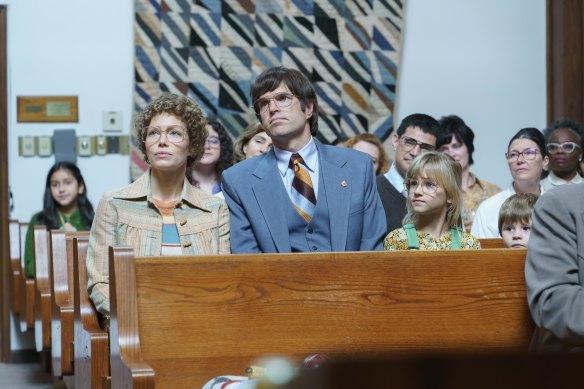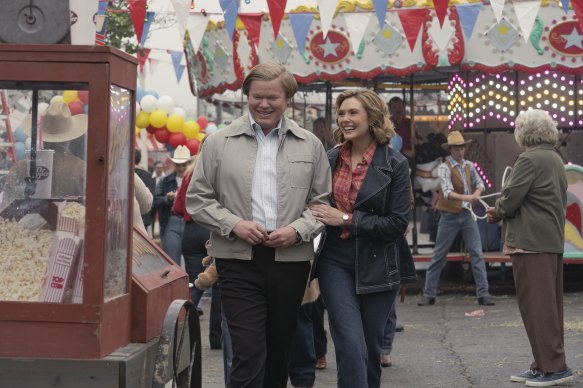Save articles for later
Add articles to your saved list and come back to them any time.
There are certain stories that get told on television again and again. You’ve probably seen at least two shows about Catherine the Great. You basically have to hide your remote to avoid a telly show about Pablo Escobar. And don’t get me started on any of the Tudors!
It makes sense. Right? These are famous historical figures who led lives of intrigue, drama and great wealth, who changed the course of history for many, for better or worse. Why wouldn’t TV producers want to mine their lives for entertainment? It’s the reason why Netflix could keep pumping out seasons of The Crown for all eternity – these people are rich and bizarre, and audiences will always be interested in their exploits. We don’t need to make a story up when something weirder exists in a palace far, far away. And there’s something quite delicious about watching something outlandish and knowing it really happened – like hearing a good piece of gossip about a shared enemy, or eavesdropping on a cuckoo phone conversation on the train home.
Jessica Biel, Timothy Simons, Aven Lotz and Dash McCloud in Candy.Credit: Tina Rowden/Hulu
Though, with so many ripped-from-the-headlines TV programs popping up over the last decade (you could blame Law and Order, but that would sort of be like blaming all your cavities on your kindly grandpa who always gave you ice cream) it does feel like we’ve reached a level of saturation that might make you think, “Hmm … did this really need to be made into a show?” For example, no amount of Anne Hathaway could compel me to watch WeCrashed, a show about the start-up company with co-working spaces around the world. Watching a show about people discussing co-working spaces, to me, feels akin to drinking liquid paper. Likewise, Prime’s Super Pumped was a dramatisation of the rise and fall of the CEO of Uber … which it turned out that no one particularly wanted.
Perhaps the biggest indication that the “based on a true story” genre has run out of juice, is when two different streaming services adapt the same real-life story about a small-town crime that happened in 1980 – and then release them only 11 months apart.
Australians may not know the name Candy Montgomery, but for a time she was quite notorious in the US. In the early ’80s, Montgomery was accused of murdering a woman called Betty Gore, who was found dead in her home in Texas having been struck with an axe 41 times. Montgomery had previously had an affair with Gore’s husband, Allan – they all knew each other from their Methodist church group and their daughters were friends – and she claimed that Gore had violently confronted her about the relationship. At trial, Montgomery told the court that she had struck Gore, but only out of self defence. A jury found Candy Montgomery not guilty.
Jesse Plemons and Elizabeth Olsen plumb marital discord in Love & Death.Credit: Binge/HBO Max
The story was adapted into a telemovie in the US back in 1990, but wasn’t touched again for another 30 years. That is until 2022, when Hulu’s Candy was released, starring Jessica Biel as Candy and Melanie Lynskey as Betty … and last month, when HBO’s Love & Death was released, starring Elizabeth Olsen as Candy and Lily Rabe as Betty.
On the one hand, this story is so salacious that it’s no wonder that more than one company/actor was interested in depicting it. It has sex, murder, jealousy and violent acts committed by the sort of people who aren’t often accused of committing such crimes. On the other hand, why is Candy Montgomery and Betty Gore’s story worthy of two adaptations? And why now?
True crime’s recent hold on pop culture has been well-documented. You could trace it back to podcasts like Serial, which exploded in popularity as listeners followed the (still unsolved) case of the murder of teenager Hae Min Lee in Baltimore in the 1990s. Documentary series like HBO’s The Jinx and Netflix’s Making A Murderer and The Staircase similarly covered crimes that were either being investigated co-currently with the making of the show, or were still unresolved by the time they aired. Then dramatic adaptions like American Crime Story: The People vs. O.J. Simpson brought it into another stratosphere, not just looking at real crimes but interrogating and reevaluating how these crimes were covered by the media at the time. A common thread? The victims of the violent crimes of these shows are usually women. The level of compassion for the victims vary wildly.
Candy and Love and Death depict their story in slightly different ways. Candy has Betty Gore dying in the first episode; Love and Death starts with Candy and Allan’s affair and only hints that someone close to Candy will die at the end of this tale. Candy has Jessica Biel wearing a very short 1980s permed style, which appears close to Candy Montgomery’s actual hair at the time, whereas Elisabeth Olsen is allowed a chic blonde bob – this seems trivial, but unfortunately for us all, hair conveys a great deal (Am I meant to consider this character glamorous? Dowdy?).
Both shows depict the events from Candy Montgomery’s point of view and largely depict Betty Gore in an unflattering light, the dour and withdrawn wife who is compared unfavourably to the vivacious and chatty Candy. Melanie Lynskey at least brings pathos to her Betty, who seems worn down and tragically underappreciated. Love and Death hasn’t finished its run yet, and it’ll be interesting to see how the two miniseries actually differ in the end.
The fact that there are two versions of this show says something not just about our hunger for true crime, but the types of crime we’re interested in seeing. In these cases, though, it seems like both Candy and Love and Death are less interested in the crime itself and more in the conditions that drive women to desperation: both Candy and Betty suffer boredom, jealousy, lack of personhood, lack of stimulation and the isolation of being a mother and wife in the suburbs in the late ’70s. It’s not so much “whodunit” but “why”.
Find out the next TV, streaming series and movies to add to your must-sees. Get The Watchlist delivered every Thursday.
Most Viewed in Culture
From our partners
Source: Read Full Article


